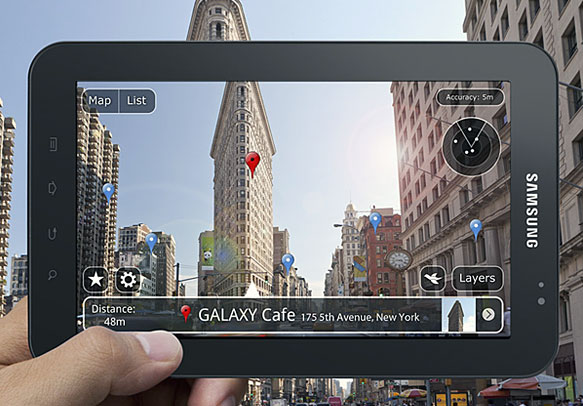Introduction and Specifications
There's no doubt the Apple iPad has taken the market by storm. Although tablets have been around for some time, no other manufacturer has managed to create the same level of demand for a tablet like Apple has created for the iPad. These days, it seems everyone wants an iPad—kids included. Of course, other manufacturers aren't going to let Apple be the only competitor in this hot market. There are a number of tablets in the works, many of which will run on Android, the first solid competitor it seems, to Apple's iOS.
Today, we're going to take a look at the Samsung Galaxy Tab. This 7-inch tablet is doesn't have the same amount of screen real estate as Apple's iPad, but its smaller screen also makes it more portable. Running Android 2.2 (Froyo), the Galaxy Tab also offers support for Adobe Flash Player 10.1, which Apple's iPad lacks. Another key feature the Galaxy Tab offers is storage expansion by means of a microSD card slot, USB and Bluetooth connectivity.

The Galaxy Tab is based on Samsung's 1GHz Hummingbird ARM core driven processor with a 3D graphics engine on board as well. The device comes equipped with front and rear-facing cameras for video chat and shares many of the characteristics of the successful Galaxy S smartphone line such as Samsung’s Media Hub which provides access to premium movies and TV episodes.
At the time of this publication, the Samsung Galaxy Tab is available from Verizon Wireless, Sprint, T-Mobile, U.S. Cellular, and AT&T. We have evaluation units from both Sprint and Verizon Wireless in house and we'll address the slight differences between the two units. Prices for the Galaxy Tab vary by carrier; the Verizon Wireless variant is available for $599.99 under a month-to-month contract. Sprint offers the Galaxy Tab for $599.99 without a contract and $399.99 with an eligible two-year contract. Verizon Wireless' monthly service plans for the Galaxy Tab start at $20 for 1GB of access. Sprint's monthly service plans start at $29.99 for 2GB of access.
Apple's App Store has certainly helped drive the success of the iPad. Without a viable app store, it's doubtful that any competing tablet could really make a dent in Apple's market share. This is where the Android platform comes in. Android has been taking market share away from iOS for some time, and it's more open to manufacturers for customization. All in all, Android seems like the perfect OS for a tablet device–it's touch-friendly, offers many of today's popular features, and it has an app store that is growing quickly.

Samsung Galaxy Tab Specifications
|
Network |
CDMA 800/1900; Wi-Fi |
|
Operating System |
Android 2.2 (Froyo) |
|
Form Factor |
Tablet - Portrait Primary |
|
Dimensions (H x W x D) |
7.48 x 4.74 x 0.47 inches (HxWxD) |
|
Weight |
13.58 ounces |
|
CPU |
Cortex A8, 1GHz CPU, Hummingbird |
|
Display Type |
7.0" WSVGA TFT (w x h: 600 x 1024 px) |
|
Memory Capacity |
Verizon Wireless: 512MB(ROM) + 592MB(RAM) + 2GB (User Memory) + 16GB microSD card preinstalled (supports up to 32GB microSD card) Sprint: 512MB(ROM) + 512MB(RAM) + 128MB(One D-RAM) + 2GB (User Memory) + 16GB microSD card preinstalled (supports up to 32GB microSD card) |
|
Connectivity |
Wi-Fi 802.11 b/g/n; USB; Bluetooth; 3.5mm Headphone Input |
|
Sensor Type |
Accelerometer, Geomagnetic, Luminance, Gyro |
|
Battery |
4000mAh lithium ion battery for up to 13 hours active use time |
|
Camera (Front) |
1.3MP |
|
Camera (Rear) |
3MP Auto Focus |
Certainly the Galaxy Tab has a lot of high-demand features and the right combination of specs to appear to be a worthy competitor to the Apple iPad. Read on as we take a closer look at the Samsung Galaxy Tab in our hands-on review to see if it's a worthy competitor to Apple's popular iPad.






